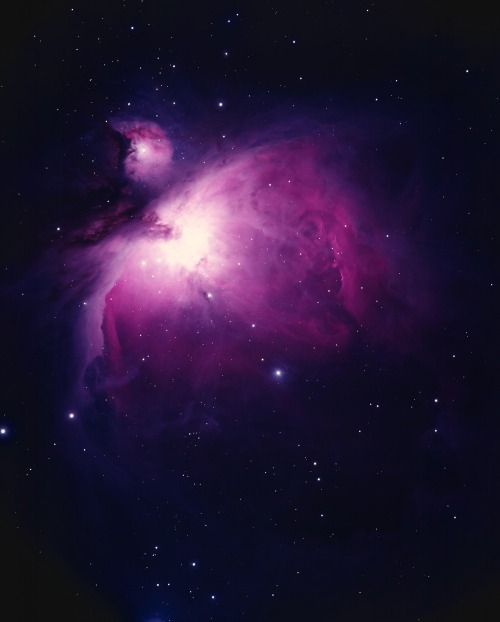I'm always glad to see a galaxy image as the APOD, and today's widefield portrait of M106 is fine and interesting!
I would have liked to know more about the image itself, how it was made, but I couldn't find out. The link,
telescopic field of view, leads to Facebook, and since I don't have Facebook, I'm not allowed to read it. So I'm going to have to guess.
I think that today's APOD is an RGB image, made from individual exposures through red, green and blue filters.
M106 with an extra pair of arms, reddish in color and made of ionized gas.
Photo: R Jay GaBany.
It seems clear that no Hα filter has been used for the APOD. Such a filter would have highlighted pink emission nebulas in M106, sites of recent and ongoing star formation. We may also have been able to see the "extra pair of arms" of M106, arms purely made of gas, energized by the active black hole of M106.
I have to wonder if the "extra arms" of M16 are in any way similar to the
reddish filaments of active spiral galaxy M77 or the even more prominent
reddish filaments of active elliptical galaxy NGC 1275.
The Orion Nebula. Its reddish color is impossible to see through a telescope.
Photo: Bill Schoening, KPNO 4m telescope.
A picture like today's APOD gives a "true" portrait of M106 and its neighbors. This is what the galaxy would look like to our eyes, if we retained the same "relative color vision" but had eyes that were many times more sensitive to light and color than they actually are. If our "relative color vision" remained the same, but got sharper, we wouldn't see the reddish filaments of M106. They are too faint, compared with the starlight of M106, and our eyes are comparatively insensitive to their red light.
Today's APOD is a reminder of the fact that a lot of modern astrophotography shows us details that our eyes could never see. It is in fact humanly impossible to see the pink color of emission nebulas with our eyes, because our eyes are too insensitive to their deep red light. Today's APOD is an idealized version of the "visible universe" to us.
Finally, note the one blue object in the picture, a star near small-looking galaxy NGC 4217 at 5 o'clock. The blue star is HD 106420, a B8V star with a color index as blue as -0.125 ± 0.013. The absence of any other strikingly blue objects in the field is a reminder how rare these blue stars really are - and in reality they are a lot rarer than a picture can show us, because these blue-hot stars are typically bright and conspicuous. By contrast, there are lots and lots of small red and yellow stars that are too faint for us to notice.
Ann
 A View Toward M106
A View Toward M106




